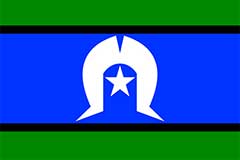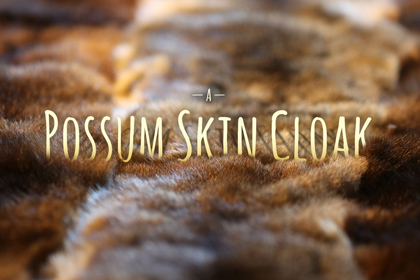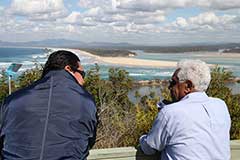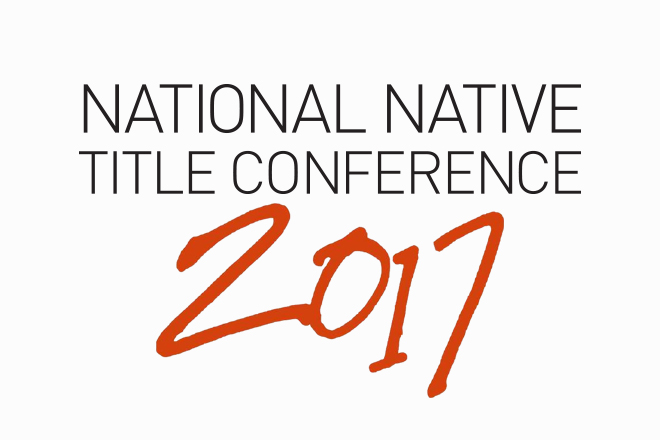Flt Sergeant Len Waters (Black Magic)
'Black Magic'
Leonard Waters is the only known Aboriginal fighter pilot to serve in World War Two. He was an 18-year-old shearer from Nindigully, Queensland, when he joined the RAAF on August 24, 1942 as a flight mechanic, (despite the formal barriers to non European enlistment in other services the Royal Australian Air Force was willing to take people of non-European descent).
When the RAAF called for aircrew trainees he applied and was accepted for pilot training. He undertook his initial training at No. 1 Elementary Flying Training School (1EFTS), Narrandera, NSW, before graduating as a Sergeant pilot from No. 5 Service Flying Training School (5SFTS), Uranquinty, NSW. His training continued at No. 2 Operational Training Unit (2OTU), Mildura, Vic, from where he was posted to No. 78 Squadron on 14 November 1944.
As a member of 78 Squadron based at Noemfoor in the Netherlands New Guinea, Morotai and Tarakan, he conducted 95 ground attack and fighter sweeps over Japanese held positions and islands in New Guinea and the Dutch East Indies (Indonesia) during late 1944 and 1945.
By the end of the war he had completed 95 missions in his Kittyhawk fighter which was called "Black Magic". The name "Black Magic" was not his idea, it was the previous mount of John Blackmore. It was perhaps fate that decided Leonard getting this aircraft!
As it was in the later stages of the war, when most of the Japanese aircraft were either destroyed, air to air combat in this 'backwater' of the Pacific War were very rare, Leonard did not shoot down any enemy aircraft.
He was promoted to Flight Sergeant on January 1 1945, and Warrant Officer on January 1, 1946, and was discharged on January 18, 1946. After the war Leonard tried to start his own air service in Western Queensland, but lack of financial backing forced his idea to fold. He went back to shearing for a while and was a prominent member of the Aboriginal community in Queensland.
Leonard tragically died in an accident on August 25, 1993. His family donated to the Australian War Memorial several artefacts of Leonards unique war service, such as his flying helmet (as shown in picture above), several photographs, his medals and flying log.
"Black Magic" was eventually written off in November 1946 and struck off charge November 1948. Its original United States Army Air Force serial number was 42-104830, it was delivered in July 1943. (source: "Spitfire, Mustang and Kittyhawk in Australian Service", by Stewart Wilson. Aerospace Publications, 1993).
As part of the 50th Anniversary of the end of World War Two in 1995, Australia Post released a special print of stamps and aerogrammes depicting some well known, and not so well known servicemen and women. The painting of "Black Magic" as featured on the aerogramme is on display in South Australia.
Len Waters Memorials
- Park in Boggabilla, N.S.W. is named after him
- Street in Canberra suburb of Ngunnawal and street in Wacol, Brisbane
Corporal Ron Harris - Special Air Service Regiment (SASR)
Corporal Ronald A Harris, 26 years old of Western Australia. Harris enlisted on September 5, 1960 and was posted to the Artillery. The popular soldier saw active service during the Borneo confrontation with Indonesia while with A Field Battery, RAA. It was here that he met and later married his Malaysian wife.
In October 1966, he transferred to the SAS and went to Vietnam with 2 SAS Squadron, on June 6 1968. Almost exactly seven months later, on January 17 1969, he was accidentally killed by his own patrol commander as he apparently tried to locate the position of his patrol in Bien Hoa.
Information provided by the SAS headquarters at Swanbourne Barracks, Western Australia, explains that Corporal Harris, a member of a two-man observation group from 11 Patrol, was on a reconnaissance mission when they spotted two Viet Cong (VC) soldiers 30 metres away. Ron decided to return to the patrol position to brief his patrol commander, but took the wrong entry path and died from fragmentation wounds and a gunshot wound to the head, from his own commander.
SAS historian, Mr Steven Danaher said: "Corporal Harris was highly thought of by his mates. He is commerated on "The Rock" at the SASR, Campbell Barracks, Swanbourne, Western Australia".
A plaque dedicated to men of the SASR who have died in training and on Operations is in Civic, the central business district of Canberra. I have taken some pictures of the SASR memorial plaque and his name on the Roll of Honour at the War Memorial - I will scan these when they are developed.




